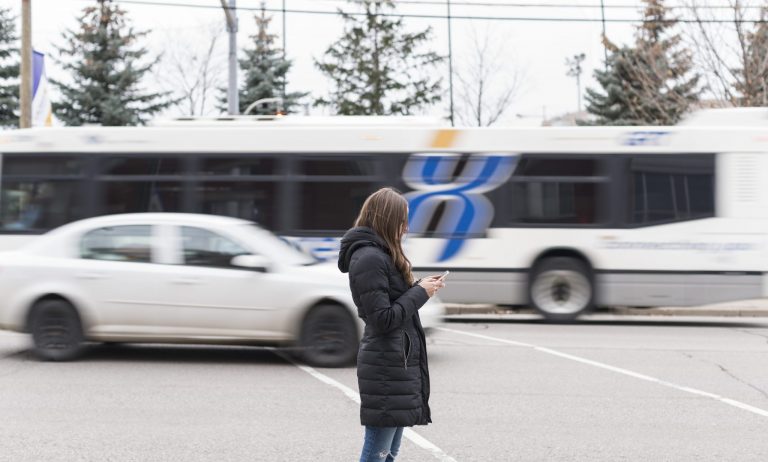How often do you find yourself walking down the street and staring at a phone, or other device? The simple distraction could now warrant you a ticket according to the Phones Down, Heads Up Act introduced recently at Queen’s Park. The bill caused quite a stir when it was introduced in late October by Yvan Baker, MPP.
While I objected to the bill, there’s not much point spending a lot of effort fighting it. First off, it’s a private member’s bill which means that its chances of becoming a law are slim. Even if it does pass, there’s not likely to be any more enforcement than there is of the distracted driving law, which has a much greater chance of protecting pedestrians from death and injury. I also recognize that as a proponent of Vision Zero, the traffic safety project that calls for the elimination of death and serious injuries on our streets, this bill does help address a problem.
Still, I find the law to be like using a sledgehammer to kill a fly that is bugging you. You’ll almost certainly miss the fly and cause unintended damage. It’s just not the best tool to solve the problem.
According to a 2015 Toronto Public Health study, 1 in 8 collisions involved someone walking who was not paying attention. While that’s not insignificant, people who are inattentive due to a phone are only a portion of that stat.
The same study reports that the person walking had the right of way in two thirds of all collisions with a vehicle. It doesn’t matter if you’re looking at your phone or not, if you’re in the right place at the right time, you should be safe. That includes the sidewalk that Toronto woman Kristy Hodgson was using when she was killed by a driver who successfully fought the charge of dangerous operation of a motor vehicle causing death.
So while people walking and using cell phones may be a problem, they should not be our priority for ensuring our streets are both safe and walkable. Let’s address the real problems that make our streets so dangerous for people walking.
Each year In Toronto, seniors account for 60 per cent of the pedestrians killed after being hit by a vehicle and 80 per cent were 55 or older. My guess based on the stereotypes of that demographic is that few of them were too busy looking at their phones. More likely they were hit by a driver making a turn who only paid attention to other drivers.
Another big problem is the distance people are asked to walk across major streets. The shorter the distance, the fewer people who are walking that get hit. We must narrow these crossings if we are really concerned about the safety of people walking or using mobility devices.
No matter the distance, the time given for people to walk across is too fast for most seniors and an even bigger problem if they require a mobility device. Let’s follow the lead of the Dutch city of Tilburg where seniors are issued an app that automatically extends the time allowed to cross a street.
We need to start to be less concerned about who is looking at their cell phone while walking and more concerned about ensuring everyone, including seniors and others with mobility concerns, are safe when they are in the right place at what should be the right time. As our society ages, too many people are certain to be killed when walking.

